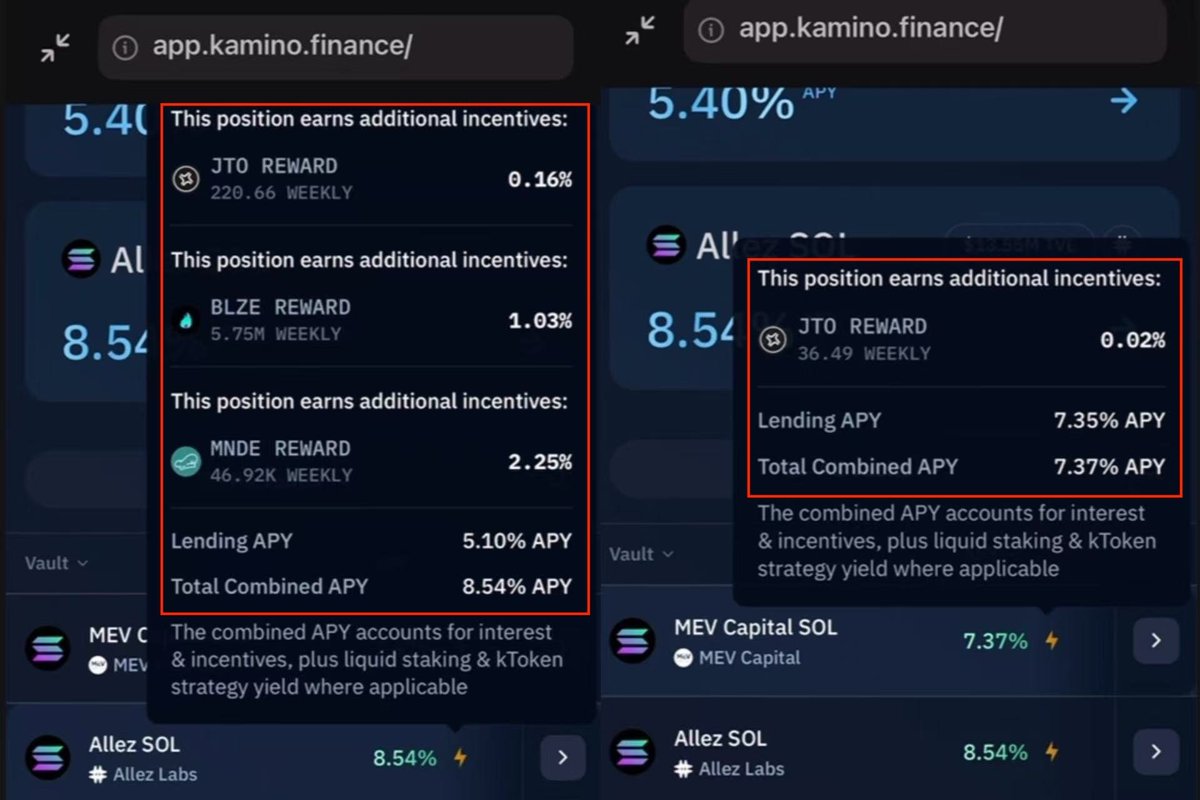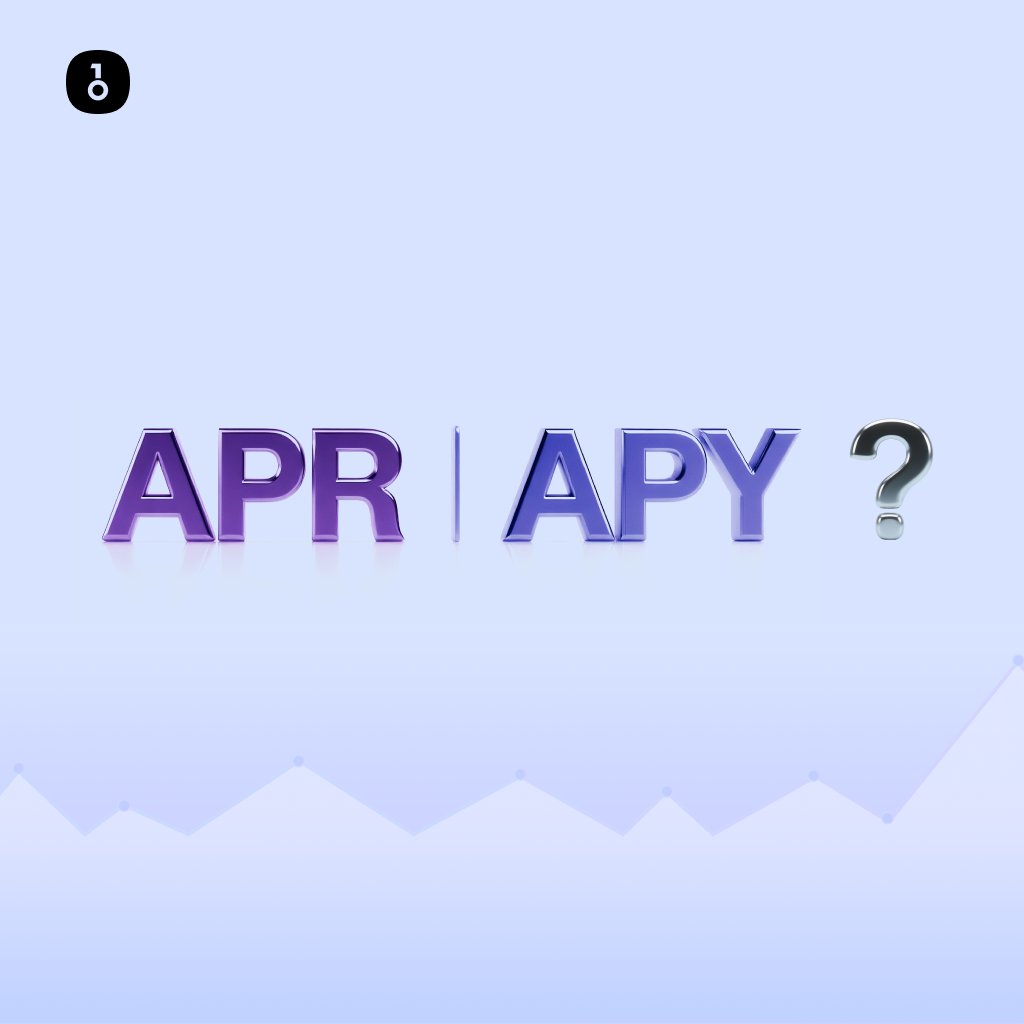APR vs APY — Don’t Let These Numbers Fool You
"10% APR" vs "10% APY" — same number, totally different story. Some protocols use shiny APY figures to sell you a dream that never pays out.
To most beginners, yield is yield. But APR and APY are built on entirely different assumptions — and mixing them up can cost you.
What APR and APY Actually Mean
APR (Annual Percentage Rate) shows your annual yield without compounding — it assumes you never reinvest your rewards.
Let’s say you deposit $1,000 into a USDT/USDC pool showing 20% APR. If you do nothing — no reinvesting, no compounding — you’ll earn $200 after one year. That’s simple interest.
But what if you keep reinvesting the rewards? Re-depositing fees, token incentives, all of it?
That’s where APY (Annual Percentage Yield) comes in. It calculates your return assuming you compound consistently — earning interest on your interest.
Let’s walk through the math with an example 👇:
Without compounding: Profit = Principal × APR
$1,000 at 20% APR → $200 after one year
With compounding: Profit = Principal × APY
APY = (1 + APR / n)^n - 1, where n is how often you compound per year.
If you auto-compound daily (n = 365), then 20% APR → ~22.13% APY, or $221.30 in a year. That’s an extra $21 — just from reinvesting regularly.
What They Don’t Tell You About Yield
Understanding APR and APY is just the beginning. Knowing the terms doesn’t mean you’re safe. In DeFi protocols, clever design choices and hidden mechanics can still leave you with less than what you thought you’d earn.
Let’s go over a few things most people overlook 👇
1/ High numbers don’t always mean high returns: Whether it’s APR or APY, these are often estimates based on past performance. Actual returns can drop fast due to things like declining pool activity, token price depreciation, or diluted rewards.
2/ You need to understand where the yield comes from: Some protocols help by breaking down the components of APR/APY directly in the UI. But in most cases, your first step should be clicking the "Docs" button — and digging. Look for the fine print. That’s where the real story usually hides.
Here’s a real example from Kamino Finance: two SOL lending vaults — "MEV Capital SOL" and "Allez SOL". At first glance, "Allez SOL" looks better with an APY of 8.54%, compared to 7.37% from "MEV Capital".
But when you check the breakdown, the actual "Lending APY" — the yield from real borrowing activity — tells a different story:
> MEV Capital SOL: 7.35%
> Allez SOL: only 5.1%
The higher total APY on "Allez SOL" comes from extra token incentives added on top. That might look great now — but it also comes with risk: token price drops, reward dilution, and less sustainable yield in the long run.
Objectively, neither pool is strictly better than the other. It’s not about chasing the highest number — it’s about understanding where the yield comes from, and choosing the one that aligns with your risk profile.
3/ When Fees Eat Your Yield: When manually compounding, don’t forget to factor in gas fees, swap fees, and other costs — especially if you’re working with a small bag.
Let’s say you are farming a 9% APR vault. You might yield about $2.25 on a $100 deposit over 3 months. But if you swapped or bridged tokens before entering, and gas was high on Ethereum, you could lose $1+ in fees — nearly half your profits gone. With smaller deposits, fees eat APY fast.
4/ When APR Pretends to Be APY
Some protocols run rewards using APR, but display them as APY — making yields look better than they are. That’s not a rounding error. It’s a red flag, especially in new ecosystems where low-quality protocols mix with legit ones. That's when you need to judge a protocol not just by numbers, but by product quality, security details, and whether the team actually seems trustworthy.
Throwback to the airdrop farming era: On ZKsync, before $ZK was launched, a lending protocol called Era Lend became a hotspot thanks to sky-high APYs and endless farming tutorials. The result? Millions were lost to an exploit. The team went silent. No compensation. Many still believe it was a pure rug.
In DeFi, while you’re chasing yields TradFi can’t offer, someone might be chasing your principal.
End
By now, you should have a clear understanding of what APR and APY really mean — and how yield in DeFi isn’t always what it seems. But remember: knowing these concepts is just a start. Making good decisions in DeFi takes more than that — it takes context, curiosity, and caution.
Disclaimer: This content is for educational purposes only and does not constitute financial advice. DeFi protocols carry significant market and technical risks. Token prices and yields are highly volatile, and participating in DeFi may result in the loss of all invested capital. Always do your own research, understand the legal requirements in your jurisdiction, and evaluate risks carefully before getting involved.


OneKey Team( @jonasCyang )
5.02K
0
The content on this page is provided by third parties. Unless otherwise stated, OKX is not the author of the cited article(s) and does not claim any copyright in the materials. The content is provided for informational purposes only and does not represent the views of OKX. It is not intended to be an endorsement of any kind and should not be considered investment advice or a solicitation to buy or sell digital assets. To the extent generative AI is utilized to provide summaries or other information, such AI generated content may be inaccurate or inconsistent. Please read the linked article for more details and information. OKX is not responsible for content hosted on third party sites. Digital asset holdings, including stablecoins and NFTs, involve a high degree of risk and can fluctuate greatly. You should carefully consider whether trading or holding digital assets is suitable for you in light of your financial condition.

